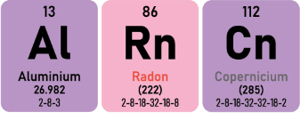Eporner HD Sex Porn Discounts Sex Games Porn Games XXX Games Hentai Games PornStar Games 3D Porn Cams Party BEST OnlyFans
Live Sex Free Live Sex Free Sex Games Páginas Porno Rose Toy Celebrity Fappening Celebrity Sex Videos TikTok Porn AI Porn Generator
Live Sex Free Live Sex Free Sex Games Páginas Porno Rose Toy Celebrity Fappening Celebrity Sex Videos TikTok Porn AI Porn Generator
Published on 2019/07/24






















ALEXEY MALYSHEV'S NUDE PHOTOGRAPHY
Russia's become a reference when it comes to erotic photography... There are good photographers and many pretty women and both use to share their pictures on the Internet, making Russia stand out from other countries... Today I wanna introduce to you Alexey Malyshev and his portfolio full of beauty and eroticism.





















THE INSTAGRAM OF THE DAY: ZOEYYLUNA
ZOEY 🌙
*jadakiss laugh*

# View photos
You can also follow us on our INSTAGRAM ACCOUNT
ExtraBall
When pole dance is your life.
ExtraBall2
(Clicking on these links daily you support ALRNCN's work. They're collaborators or sponsors and, by visiting their sites, they like us even more)










AMATEUR FLESH: SPOOKIE SHELBIE
Back in the day, you needed an agent, a studio, someone willing to bet on you and open the doors to pre-set channels. Today, thanks to the internet, the showcase is global and open 24/7.
That doesn’t mean it’s easy, but the tools are there: anyone with talent, presence, or just pure attitude can reach millions of people. And sometimes all it takes is one well-placed video to turn a complete unknown into the muse of hundreds of thousands of men.
That’s what makes discovering a new amateur so exciting: that unique moment when someone jumps from their bedroom straight onto the world’s screens.

# View photos and videos
ExtraBall
Insert coin.
Full scene
She’s Sandra Wellness, and in this link you can find more of her scenes.
ExtraBall2
(Clicking on these links daily you support ALRNCN's work. They're collaborators or sponsors and, by visiting their sites, they like us even more)









 CamBB.xxx
CamBB.xxxWe find the best live porn cams across many different cam sites like Streamate, Chaturbate, Cam4 and Stripchat.
 ChatSex.xxx
ChatSex.xxxWith Chat Sex you get free sex cams featuring nude cam girls you can chat with for free.












RECOMMENDED SITES
 Add your site
Add your site
- sweetlicious
- Porn Pics
- Motherless
- Erotic Beauties
- BoobieBlog
- celeb-stalker.com
- Babes & Bitches
- Kanoni Net
- Candid Teens
 Add your site
Add your site💩 CrazyShit
🤪 eFukt
NudeChatGirls
👉🍑 Top XXX Pictures
Bingo Porno
Best Porn Blog Sites
 Sex Games
Sex Games
Real Amateur Porn
MrPornGeek
Comepollas
PornScn Free Porno
AI Girlfriend App
Hardcore Porn Videos
NSFW.Tools
Sex AI Chat
Porn Game

















RANDOM AI-GENERATED IMAGES VOL21
While AI accelerates, we’re still trying to understand it—and predict it.
Lately it feels like artificial intelligence isn’t just moving fast: it’s gone feral. In his latest interview, Geoffrey Hinton—the “godfather” of all this—drops a few unsettling truths: countries compete with countries, companies compete with companies, and when everyone floors the accelerator at once, there’s no such thing as a collective brake. Nobody wants to be the one to lift their foot while the rest pull ahead.
Hinton sketches a future where AI could replace much of intellectual work, widen the wealth gap, and strain democracy. He talks about superintelligence in 10–20 years, and about what’s already here: the overwhelming advantages of digital systems over humans (they copy for free, learn at another scale, don’t sleep). Then comes the awkward question: if automation doesn’t create enough new jobs this time, who’s paying the rent for those left out?

History says every technological revolution kills some jobs and creates others. The printing press, the steam engine, electricity, the internet… There was always work in the end—different work, but work. And yes, it’s also true that nobody in 1995 pictured influencers, community managers, or people making a living fine-tuning algorithms. Maybe that happens again. Or maybe not. If the curve steepens the way Hinton suggests, the adjustment could be faster and more brutal than we’re used to. Hence the talk of basic income, new social contracts, real lifelong learning (not a sticker), and regulation that doesn’t kill innovation—or hand the future to three players with server farms in the desert.
If you want to hear him unfiltered, the interview is here: watch the episode.
And now, back to our thing…
While the gurus decide whether they’ll save us or sack us, we stick to what we do: random images created by AI. Beautiful women, flawless skin that doesn’t exist, gazes nobody set, curves a network imagined after devouring millions of pixels. It’s synthetic, sure… and it still stirs something very human.
The paradox is delicious: maybe AI will take our jobs, worsen collective decisions, or multiply inequality—but today, today, look at what it already does. It fantasizes, provokes, and hooks. And here we are, finger on the mouse, thinking that maybe it’s worth living (and dying) with this spectacle in the background. Relax: the apocalypse isn’t here yet; in the meantime, enjoy the simulation.

# See images
ExtraBall
Elizabeth Hurley and the dress that left everyone stunned at the premiere of “Four Weddings and a Funeral” in 1994.
ExtraBall2
(Clicking on these links daily you support ALRNCN's work. They're collaborators or sponsors and, by visiting their sites, they like us even more)











AMATEUR FLESH: CREAMYMOANA
Today I stumbled across another one of those X accounts that, at first glance, look like they belong to an actual content creator. I’m going to share photos and videos from it because they’re worth it, but I won’t lie: something feels off.
This isn’t the first time — and it won’t be the last. You can tell right away when you see that 90% of the timeline is nothing but retweets of other girls. That’s when the doubts kick in. A real creator might do collabs or give someone a shoutout here and there, but they don’t spend their whole profile promoting others.
There are a few possible scenarios:
- Fake accounts (impersonation): profiles pretending to be the creator, using stolen photos, with the sole purpose of driving traffic to paid links like OnlyFans, pirate sites, or outright scams.
- Run by third parties/agencies: it’s not her managing the account, but a community manager or agency handling several girls at once, cross-retweeting between them.
- Self-promo networks (shoutout for shoutout): a “you retweet me, I retweet you” cycle that spirals out of control until the account looks more like a billboard than a personal profile.
Whatever the case, when you see a profile that lives almost entirely on retweeting others, odds are the real creator isn’t behind it. From there, it’s up to you. Don’t say I didn’t warn you.

# See photos and videos
ExtraBall
Art Attack.
ExtraBall2
(Clicking on these links daily you support ALRNCN's work. They're collaborators or sponsors and, by visiting their sites, they like us even more)










Contact
You can tell us whatever you want via email: [email protected]
If you prefer, you can use this contact form:
If you prefer, you can use this contact form:






THE INSTAGRAM OF THE DAY: SKIBBSKY
Sky Wonderland
🌞LA based🌚

# View photographs
You can also follow us on our INSTAGRAM ACCOUNT
ExtraBall
- Last night I had a really weird dream, dude.
- Yeah? What did you dream?
ExtraBall2
(Clicking on these links daily you support ALRNCN's work. They're collaborators or sponsors and, by visiting their sites, they like us even more)










STASYQ COMES HOME
Some time ago, StasyQ was already a sponsor on ALRNCN. They were here for quite a while, proving their take on erotica has little to do with the endless flood of porn on the internet. And now, we’re happy to say they’re back.
They’re not about volume or spamming the same old thing. They’re about exclusivity, elegance, and that sharp eye for every detail. The idea is simple: premium content for people who appreciate well-crafted work. Curated models, careful productions, and a presentation that makes each video feel distinct.
And as a perfect example, here’s Toree, the star of StasyQ 634. One of those beauties who captivate without gimmicks: pouty lips, brown hair, a slender figure, and a presence that fills the frame. She starts lightly dressed—white sneakers, blue panties, and a racing jacket that barely hides her full, round breasts. But that’s just the beginning: the jacket drops, the clothes vanish, and intimacy turns into a show.
StasyQ’s return to ALRNCN isn’t random. They know where to play their best cards, and we know our audience loves the exclusive. Now it’s your turn. Click through, dive in, and see why StasyQ doesn’t play in the same league as the rest.

# See Toree on StasyQ
ExtraBall2
(Clicking on these links daily you support ALRNCN's work. They're collaborators or sponsors and, by visiting their sites, they like us even more)






























